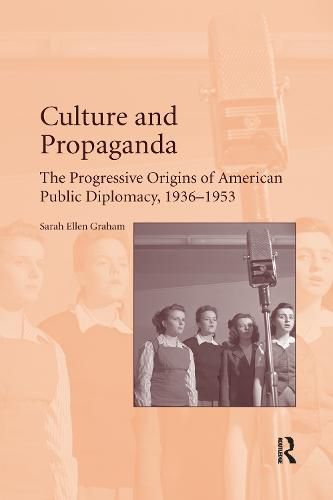Readings Newsletter
Become a Readings Member to make your shopping experience even easier.
Sign in or sign up for free!
You’re not far away from qualifying for FREE standard shipping within Australia
You’ve qualified for FREE standard shipping within Australia
The cart is loading…






Throughout the twentieth century governments came to increasingly appreciate the value of soft power to help them achieve their foreign policy ambitions. Covering the crucial period between 1936 and 1953, this book examines the U.S. government’s adoption of diplomatic programs that were designed to persuade, inform, and attract global public opinion in support of American national interests. Cultural diplomacy and international information were deeply controversial to an American public that been bombarded with propaganda during the First World War. This book explains how new notions of propaganda as reciprocal exchange, cultural engagement, and enlightening information paved the way for innovations in U.S. diplomatic practice. Through a comparative analysis of the State Department’s Division of Cultural Relations, the government radio station Voice of America, and the multilateral cultural, educational and scientific diplomacy of Unesco, and drawing extensively on U.S. foreign policy archives, this book shows how America’s liberal traditions were reconciled with the task of influencing and attracting publics abroad.
$9.00 standard shipping within Australia
FREE standard shipping within Australia for orders over $100.00
Express & International shipping calculated at checkout
Throughout the twentieth century governments came to increasingly appreciate the value of soft power to help them achieve their foreign policy ambitions. Covering the crucial period between 1936 and 1953, this book examines the U.S. government’s adoption of diplomatic programs that were designed to persuade, inform, and attract global public opinion in support of American national interests. Cultural diplomacy and international information were deeply controversial to an American public that been bombarded with propaganda during the First World War. This book explains how new notions of propaganda as reciprocal exchange, cultural engagement, and enlightening information paved the way for innovations in U.S. diplomatic practice. Through a comparative analysis of the State Department’s Division of Cultural Relations, the government radio station Voice of America, and the multilateral cultural, educational and scientific diplomacy of Unesco, and drawing extensively on U.S. foreign policy archives, this book shows how America’s liberal traditions were reconciled with the task of influencing and attracting publics abroad.